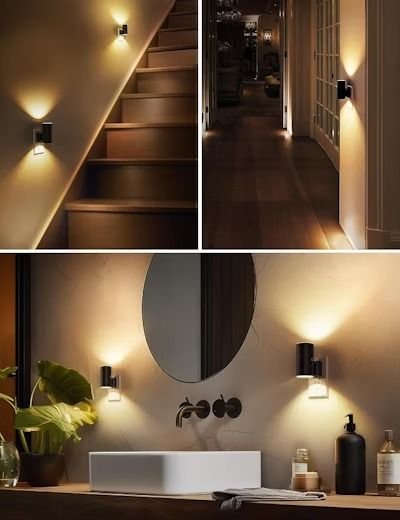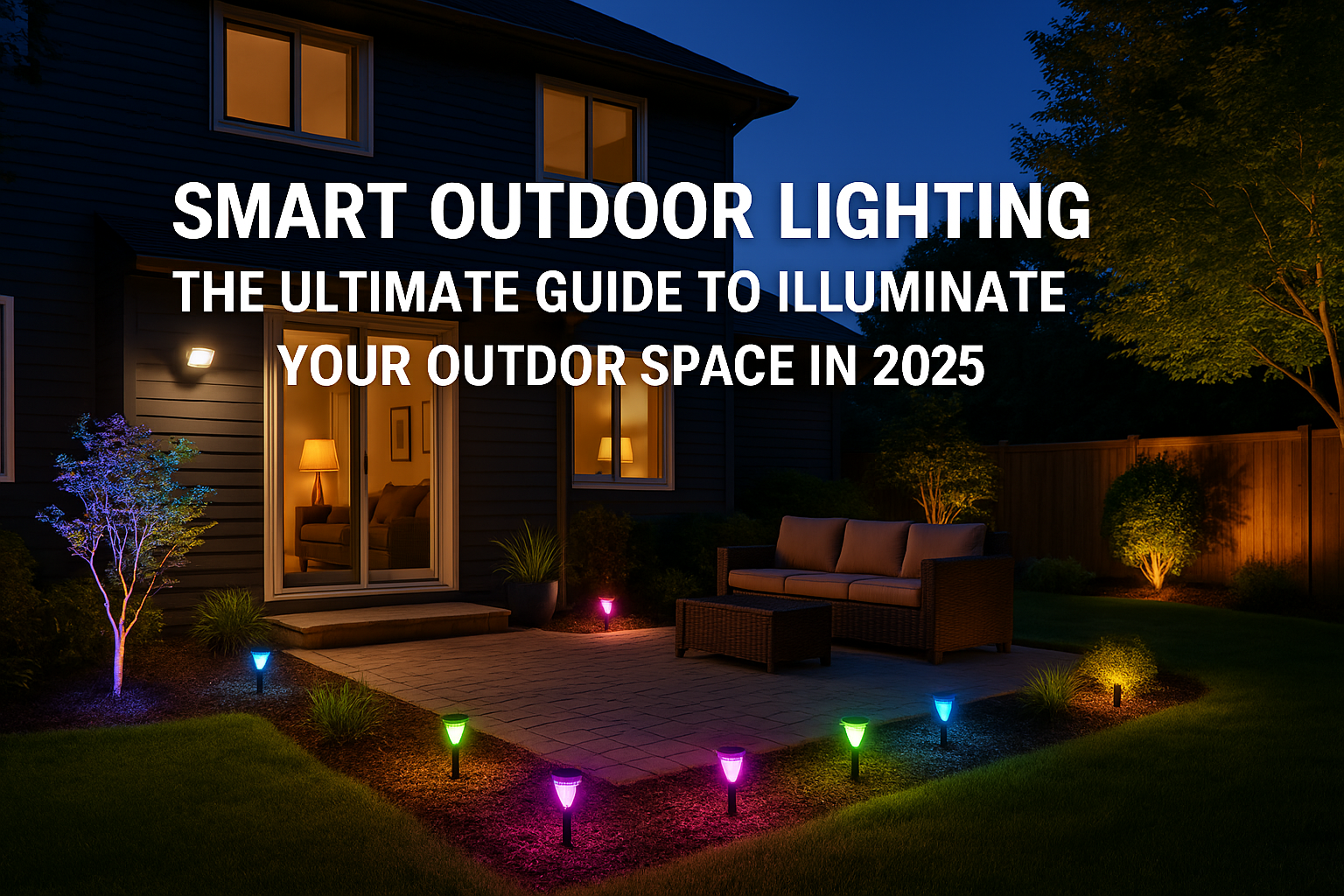Do Smart Light Sensors Save Energy at Home?

Have you ever forgotten to turn off the lights when leaving a room? Or kept the house brightly lit when natural daylight was pouring in? These small habits can add up to significant energy waste over time. The good news is that reducing electricity usage doesn’t have to mean turning your life upside down. With smart light sensors, saving energy at home becomes effortless.
This blog will explore how smart light sensors work, their energy-saving benefits, and how they can transform your home into a more energy-efficient and cost-effective space. By the end of this post, you’ll understand why investing in smart lighting technology is a smart decision for your wallet and the planet.
How Do Smart Light Sensors Work?
At their core, smart light sensors automate your lighting based on environmental factors such as motion detection or natural light levels. These devices typically use motion sensors, ambient light sensors, or a combination of both to control when your lights turn on, off, or dim.
Here’s how they work:
- Motion Sensors detect when someone enters or leaves a room, automatically switching the lights on or off.
- Ambient Light Sensors measure natural light levels in a space and adjust artificial lighting accordingly.
- Some advanced systems also integrate with smart home ecosystems, allowing you to control your lighting remotely or set schedules via apps like Alexa, Google Home, or proprietary platforms.
Smart light sensors go beyond convenience. They ensure your lighting adapts to how and when it’s actually needed, minimizing waste without compromising comfort.
Key Ways Smart Light Sensors Help Save Energy

Saving energy at home doesn’t have to rely on constant vigilance. Smart light sensors optimize energy usage in several practical ways:
1. Lights Turn Off Automatically in Empty Rooms
Perhaps the most common feature of smart light sensors is their ability to detect when a room is unoccupied. For instance:
- Case Study 1: A family reduced their lighting energy consumption by 30% after installing smart light sensors in their bathrooms and hallways.
Accidentally leaving lights on becomes a thing of the past, and energy use drops significantly over time.
2. Adjust Lighting Based on Natural Daylight
Using ambient light sensors, smart lights can detect when there’s enough daylight to reduce or eliminate the need for artificial lighting. Imagine having your kitchen lights dim automatically when the morning sun streams through the windows.
- Personal Experience: After installing smart light sensors in my kitchen, the lights now dim during sunny afternoons, saving energy while maintaining a cozy atmosphere.
3. Prevent Accidental Overuse
Forgot to turn off the porch light when leaving for work? Left the basement lights on? Smart sensors ensure such accidents are a thing of the past. By monitoring activity and lighting needs, sensors reduce unnecessary usage.
4. Optimize Schedules and Usage
Combine smart sensors with a smart home ecosystem to set up schedules and zones. For example, you can:
- Dim the lights in your living room at 10 p.m.
- Turn off all non-essential lighting when leaving for work.
Smart routines allow you to streamline lighting patterns and further reduce unnecessary energy use.
Realistic Energy and Cost Savings
How much energy can you save by using smart light sensors? Let’s take a look at the numbers:
- According to industry experts, homes equipped with smart lighting solutions can see up to 45% reduction in lighting energy usage.
- Case Study 2 reveals an office building saved $500 monthly by using smart light sensors in communal spaces and adjusting lighting based on natural daylight.
Consider this comparison:
- Traditional lighting usage without automation often results in 4-6 hours of wasted energy per day.
- With smart light sensors, unnecessary usage is reduced by automatically dimming or shutting off lights during idle times.
Over time, smart light sensors can pay for themselves within 1-2 years via energy savings. They’re not just an environmentally friendly choice but a budget-friendly one too.
Best Places to Use Smart Light Sensors for Efficiency
Not all rooms have equal lighting needs, so where should you install smart sensors for maximum efficiency?
1. Bathrooms
Bathrooms often see intermittent short-term use, making them ideal for motion-activated lighting.
2. Hallways and Staircases
Busy passageways often experience lights left on unnecessarily. Motion sensors can eliminate this waste.
3. Kitchens
Ambient light sensors in kitchens are especially useful, where natural light can vary throughout the day.
4. Outdoor Spaces
From porch lights to garden pathways, automatically timed or motion-activated lighting ensures security without wasting energy.
5. Home Offices
Reduce eye strain and save energy by using ambient light sensors to adjust brightness based on natural light during the workday.
Additional Tips to Maximize Smart Lighting Savings
For even greater savings, consider pairing smart light sensors with other complementary technologies and strategies:
1. Combine with LED Bulbs
LEDs already use up to 75% less energy than traditional incandescent bulbs. Couple them with smart sensors for maximum energy efficiency.
2. Set Up Routines and Zones
Group your lighting into zones (e.g., living areas, bedrooms, workspaces) and create schedules. For instance, dimming or turning off lights at night saves energy without requiring manual effort.
3. Use Dimming Features and Timers
Many smart lighting systems include dimming capabilities. Lower brightness when full lighting isn’t necessary, such as during a movie night or afternoon naps.
4. Integrate with Smart Home Hubs
Platforms like Alexa, Google Home, or Apple HomeKit allow seamless control and optimization, ensuring every light is used efficiently.
Turn Your Home Into a Smart Energy Saver Today
Saving energy has never been easier. Smart light sensors simplify energy-efficient living, offering substantial savings, reduced environmental impact, and enhanced convenience. From shutting off unused lights to harnessing natural light effectively, these small devices make a big difference.
Start your energy-saving journey today and transform your space with smarter, greener technology. Click here to discover how smart light sensors can reduce electricity usage and create a more sustainable home tailored to your needs.
FAQs
How much energy can I save using smart light sensors?
Homes equipped with smart lighting can see up to 45% reductions in lighting energy usage, depending on setup and usage patterns.
Are smart sensors better than timers for saving electricity?
Smart sensors are more versatile than timers as they react dynamically to real-world conditions like room occupancy and daylight levels, reducing waste automatically.
Do motion and ambient light sensors work together to reduce energy use?
Yes, many modern smart light systems combine motion and ambient light sensors to maximize energy savings by dynamically adjusting lighting based on occupancy and natural light.
